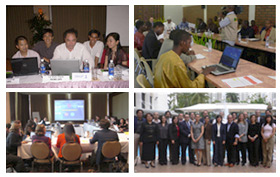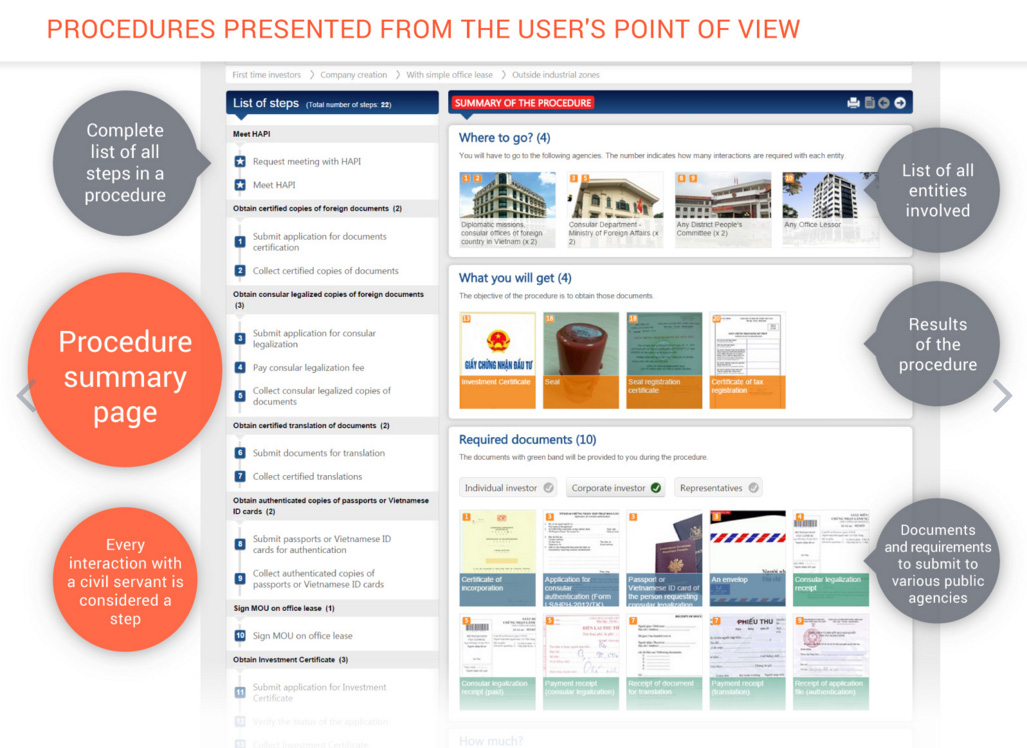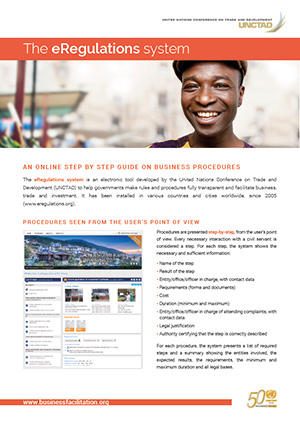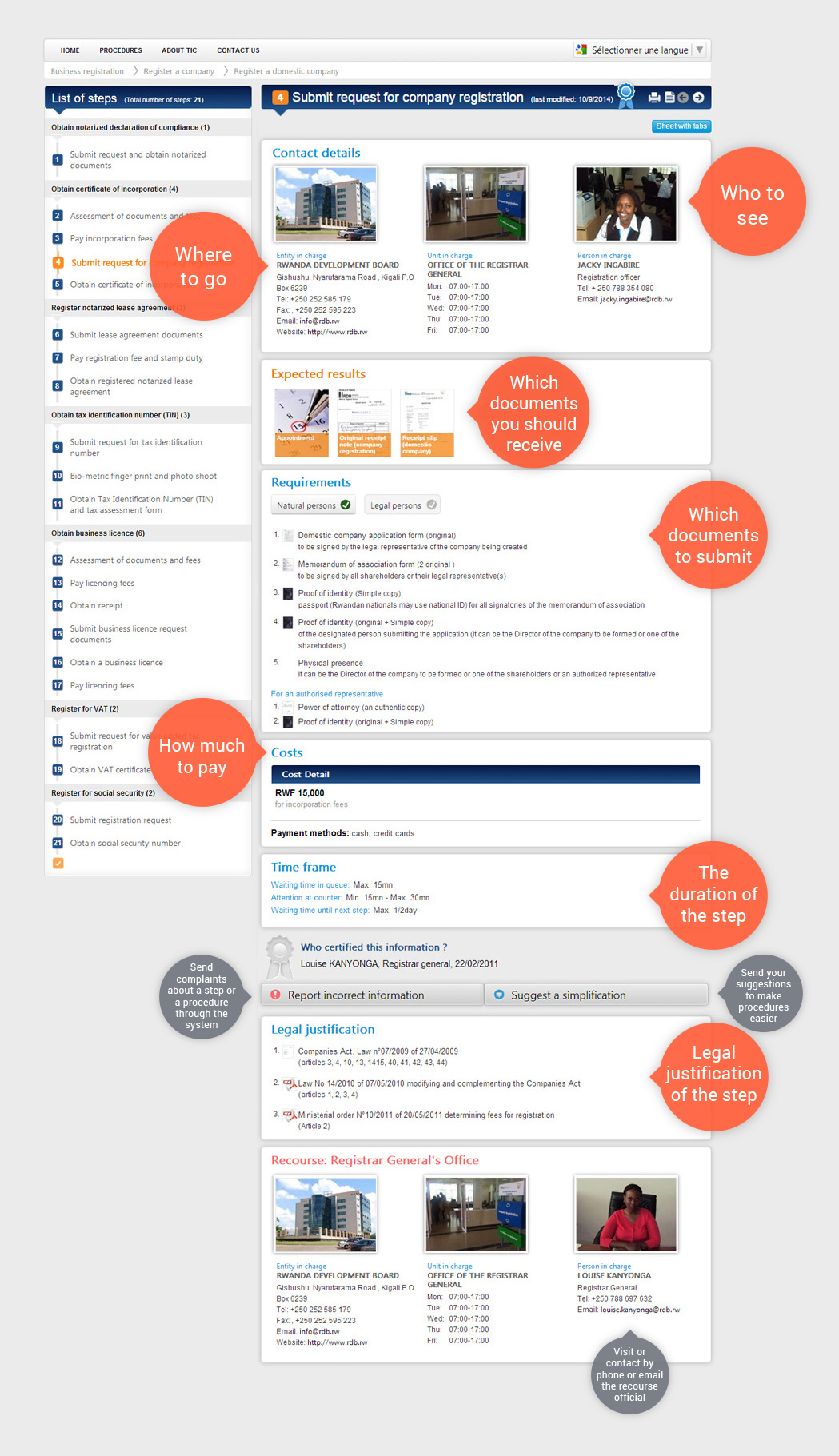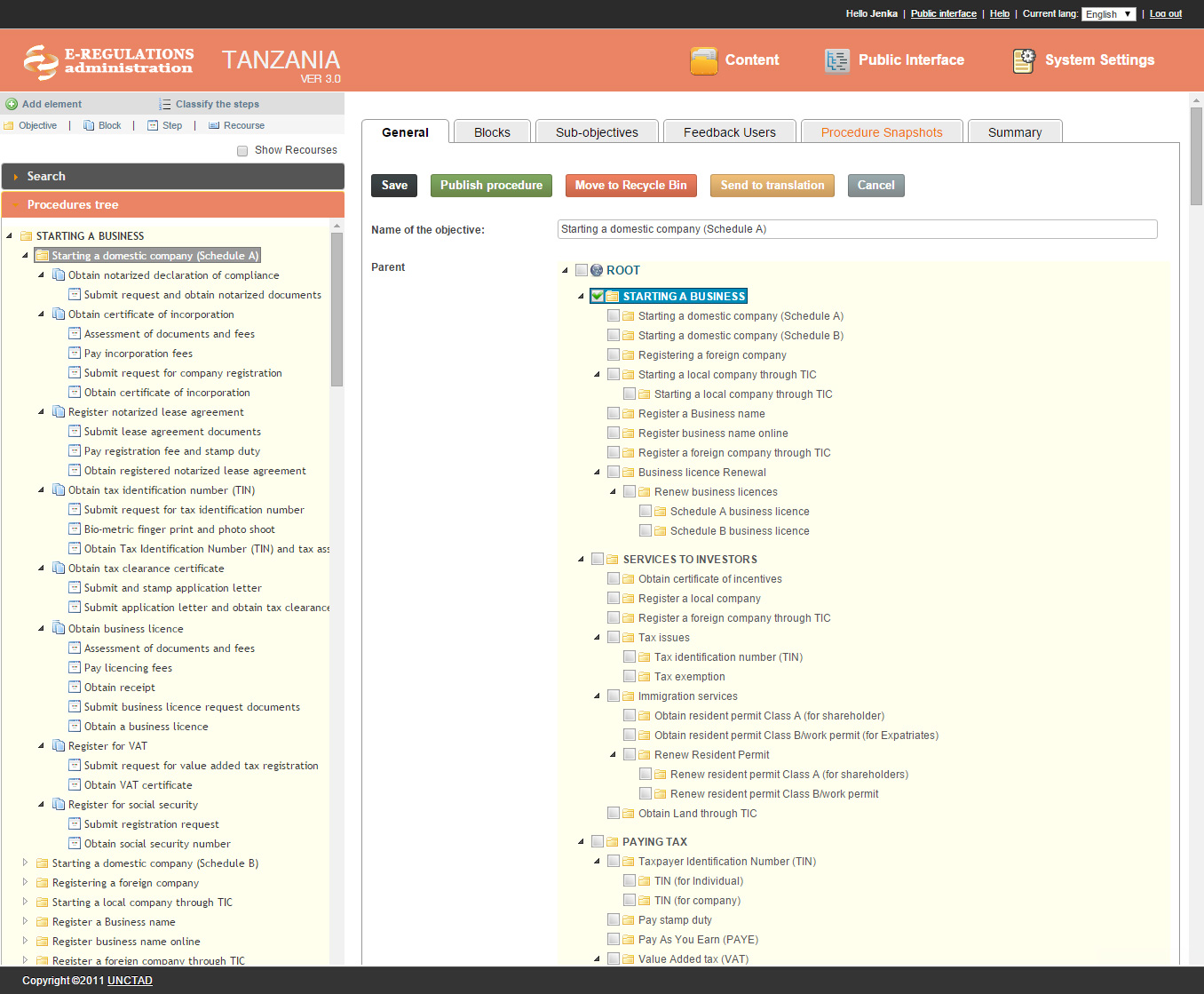information portals on
administrative procedures
Making administrative procedures transparent, swift and efficient is an essential part of an enabling environment for private sector development, good governance and the rule of law. UNCTAD has developed an electronic tool called eRegulations to help governments make rules and procedures fully transparent and to facilitate business, trade and investment.
This system contributes to greater transparency and efficiency in the public service and improved governance. It has been installed in various countries and cities worldwide, since 2005.
Main benefits
Provides total transparency on rules and procedures, through detailed, practical and up-to-date descriptions of steps to go through, as seen from the user's point of view. |
|
Facilitates the simplification of procedures. Field investigations undertaken to collect the information are an opportunity for government agencies to review and streamline procedures. Once they are clearly documented online, it becomes easy to identify unnecessary steps and requirements. |
|
Promotes public awareness of, and stimulates public-private dialogue on, rules and procedures. |
Procedures seen from the user's point of view
Procedures are presented step-by-step, from the user’s point of view.
Every necessary interaction with a civil servant is considered a step. For each step, the system shows the following information:
Name of the step
Result of the step
Entity/office/officer in charge, with contact data
Requirements (forms and documents)
Cost
Duration (minimum and maximum)
Entity/office/officer in charge of attending complaints, with contact data
Legal justification
Authority certifying that the step is correctly described
For each procedure, the system presents a list of required steps and a summary showing the entities involved, the expected results, the requirements, the minimum and maximum duration and all legal bases.
The eRegulations system is a Content Management System (CMS). It allows, from the administration interface, modifying the public interface (colors, texts, pictures, logos), registering and updating the procedures and the corresponding data, ordering the menus, creating users and granting administration rights, defining the recipient of user's feedback, etc.
Information is displayed through a user-friendly, public website. Users can interact with the site and its administrators through email and online chat, for any inquiry, suggestion or complaint.
The public website is fully configurable, through a password protected administration website (extranet) which can be administered without computer expertise after a few hours of training. Data on procedures are registered and updated in the database through the administration website.
The system is installed on a local server or in the cloud, as decided by the recipient country. Technical maintenance doesn't require any specific technical knowledge (normal server maintenance). UNCTAD provides a complete technical documentation. The source code can be made available upon request.
Guidance & training in information collection
Detailed information on procedures is often not readily available. The challenge is to adequately reflect the processes which are applied in practice (as opposed to theoretical ones). Building a comprehensive and orderly list of steps and collecting, for every step, the required data (contacts, forms, requirements, duration, legal basis, etc.) usually requires repeated field visits to all offices involved. Keeping the information updated also supposes certain organization.
UNCTAD can assist countries in developing adapted methodologies and in building the capacity to collect and maintain the information on procedures.
National ownership
User countries are granted an unlimited right to use the system and to configure it according to their needs. They decide freely on the procedures they want to register and have full ownership of all information in the database.
